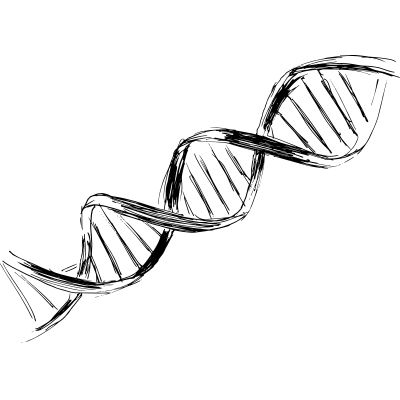Analysis Shows Neoadjuvant Activity of Nab-Paclitaxel in Breast Cancer
Neoadjuvant chemotherapy with nanoparticle albumin-bound nab-paclitaxel has demonstrated substantial activity across major subgroups of breast cancer, a meta-analysis of clinical trials showed.

Neoadjuvant chemotherapy with nanoparticle albumin-bound nab-paclitaxel has demonstrated substantial activity across major subgroups of breast cancer, a meta-analysis of clinical trials showed.
In studies involving unselected patients, nab-paclitaxel was most active in the more aggressive forms of breast cancer. Cumulative data showed a pathologic complete response (pCR) rate of 41% in triple-negative breast cancer (TNBC) and 54% in HER2-positive disease. An analysis of randomized comparisons against conventional taxane formulations demonstrated almost 40% higher odds of achieving pCR with nab-paclitaxel, as reported at the San Antonio Breast Cancer Symposium.
“Our study demonstrates that nab-paclitaxel is an effective cytotoxic drug in neoadjuvant treatment of breast cancer, especially in patients with aggressive disease subtypes, like TNBC and HER2-positive tumors,” Kunwei Shen, MD, a medical oncologist at Shanghai Ruijin Hospital in China, and colleagues concluded in a poster presentation. “Exchange of neoadjuvant nab-paclitaxel for conventional taxanes could significantly improve the probability of pathologic complete response with generally reasonable toxicities.”
Though neoadjuvant chemotherapy has an established role in the treatment of breast cancer, the efficacy and tolerability of nab-paclitaxel in the setting has remained unclear.
To augment existing data and inform decision making, Shen and colleagues performed a systematic review and meta-analysis of published literature, including abstracts from oncology meetings. The primary objectives were to assess the efficacy of nab-paclitaxel in unselected patients and in intrinsic breast cancer subtypes and to compare the efficacy and toxicity of nab-paclitaxel to conventional taxane regimens in the neoadjuvant therapeutic setting for breast cancer.
The search identified 21 studies and a cumulative total of 2,357 patients, including 3 randomized clinical trials. The investigators used a uniform definition of pCR (ypT0/is ypN0) to evaluate the efficacy of nab-paclitaxel.
Overall, neoadjuvant therapy with nab-paclitaxel resulted in a pCR rate of 32%. Across the studies of unselected patients, the pCR rate ranged from 4% to 53%.
Among the intrinsic breast cancer subtypes, nab-paclitaxel attained the lowest pCR rate in patients with hormone receptor-positive (HR+)/HER2-negative breast cancer (14%). That contrasted with a pCR rate of 41% in the triple-negative subtype and 54% among patients with HER2-positive breast cancer. Further analysis of the HER2-positive subgroup showed that nab-paclitaxel resulted in a higher pCR rate for patients with hormone receptor-negative tumors compared with hormone receptor-positive tumors (61% vs. 41%).
The 3 randomized trials comparing nab-paclitaxel and conventional taxane formulations accounted for the vast majority of patients included in the analysis (2,053). Pooled results from the 3 trials showed that patients randomized to neoadjuvant therapy with nab-paclitaxel had a significantly higher odds ratio for pCR compared with conventional paclitaxel (Abraxane) or docetaxel (Taxotere) (OR 1.383, 95% CI 1.141-1.76, p=0.001). Across the 3 trials, the pCR rate favored nab-paclitaxel versus the comparator by odds ratios that ranged from 1.27 to 1.58.
With respect to the relative toxicity of nab-paclitaxel versus conventional taxanes, the 3 randomized trials showed that rates of neutropenia and leukopenia were numerically higher with nab-paclitaxel but did not differ significantly from the rates observed with standard paclitaxel or docetaxel. Liver enzyme elevation (ALT/AST) also occurred more frequently with nab-paclitaxel, the difference was not significant compared with standard taxane therapy.
All grades of peripheral neuropathy occurred significantly more often with nab-paclitaxel (OR 2.090, 95% CI 1.1016-4.302, p=0.045). The incidence of grade ³3 peripheral neuropathy also was significantly higher with nab-paclitaxel (OR 3.766, 95% CI 2.324-6.100, p<0.001). Hypersensitivity reactions occurred more often with paclitaxel than with nab-paclitaxel, despite premedication (especially grade ³3 hypersensitivity, p=0.02).
Other common nonhematologic toxicities occurred with similar frequency in patients treated with nab-paclitaxel or conventional taxane therapy, including nausea, vomiting, fatigue and diarrhea.
Therapy Type and Site of Metastases Factor into HR+, HER2+ mBC Treatment
December 20th 2024During a Case-Based Roundtable® event, Ian Krop, MD, and participants discussed considerations affecting first- and second-line treatment of metastatic HER2-positive breast cancer in the first article of a 2-part series.
Read More
Imlunestrant Improves PFS in ESR1-Mutant Advanced Breast Cancer
December 13th 2024The phase 3 EMBER-3 trial showed imlunestrant improved PFS over SOC endocrine therapy in ER-positive, HER2-negative advanced breast cancer with ESR1 mutations, though not significantly in the overall population.
Read More
ctDNA Detection Tied to Tumor Burden, Recurrence in HR+ Early Breast Cancer
December 13th 2024A phase 2 trial showed ctDNA detection in HR-positive early breast cancer was linked to larger tumors, higher residual cancer burden, and increased recurrence after neoadjuvant endocrine therapy.
Read More